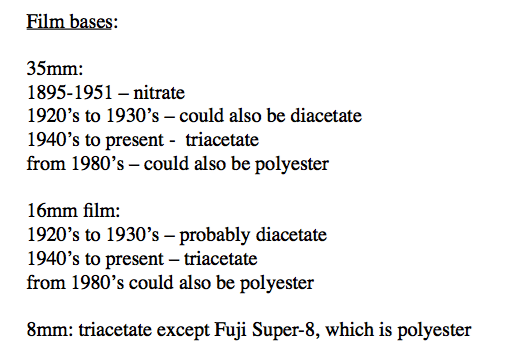Results 21 to 30 of 37
-
06-02-2015, 08:11 PM #21

This thread solves a mystery for me....a short time ago I opened up a Blue Steel celluloid scaled straight, and it blew up in my hand, so this degree discussion has some merit IMHO.
"Call me Ishmael"
CUTS LANE WOOL HAIR LIKE A Saus-AGE!
-
The Following User Says Thank You to WW243 For This Useful Post:
sharptonn (06-04-2015)
-
06-03-2015, 04:14 PM #22Senior Member



- Join Date
- Apr 2008
- Location
- Essex, UK
- Posts
- 3,816
Thanked: 3164
Hi Bill,
There are two or three main types of going back to the early days. To make it you needed 100% pure cotton which has been boiled in soda or somesuch to remove the oiliness, wash it, put it in a solution of acids (nitric and sulphuric), thoroughly wash it and dry it. This is known as gun cotton or nitro-cellululose, the nitro referring to nitric acid, the cellulose referring to the cell structure of cotton. To use it has to be made soluble - done by immersing it in diverse solutions such as ethyl alcohol, ether, chloroform, etc. To be honest ether on its own does the job of dissolving the gun cotton into a thick, syrupy solution.
The gun cotton contains two explosive chemicals, the chief one being pyroxilin, and gun cotton was often known by this name. the explosiveness of pyroxilin depends on the volume of nitric acid - hence you find the old books referring to nitrated cotton - today with know it as cellulose nitrate or nitro-cellulose. 13% plus nitrogen content meant it could be used for warheads and blasting in quarries.
The association with film goes way back, from the mid 1840s to its gradual demise in the 1880s. It had a revival though - I was a wetplate photographer for instance - wet plate is a plate of glass that has been covered with an even coat of nitro cellulose (also called salted collodion) then dipped into a bath of silver nitrate (lunar caustic) and taken to the camera and exposed while still wet.
Later on (at the end of the 1880s), Kodak used a lightly nitrated solution with the addition of camphor (plasticiser) to coat film stock. Due to the instability of the film it often spontaneously exploded, causing large fires in the places where film was stored for distribution. It was discontinued in the 1950s. It not only exploded in warehouses, but in crowded cinemas too. The projectionist booth was covered with asbestos sheeting, so sometimes the fire did not escape and kill most of the audience - the projectionist was not so lucky though. Even if he survived to retirement, he probably had asbestosis.
The need to make the filmstock safer called for an acetate base, using cellulose acetate. This was, ironically, called 'Safety Film'. It was less susceptible to exloding, but the acetate cause the plastic to become brittle and shrink. Acetic acid (vinegar - corrosive in high concentrations) outgases and leaves a vinegar smell - this was known in the motion picture industry as 'vinegar' syndrome. In extreme cases the vinegar can be deposited as crystals or drops of liquid on the surface, and as degradation proceeds the salts and plasticisers lay on the surface as powdery deposits, so there is an odour of camphor, too - in the razor world we call this cell-rot.
Nitro celluloid is still around - you can find it in varnishes and lacquers - the 'dope' they use to stiffen the fabric on wooden framed aircraft is a form of nitro-cellulose.
Regards,
Neil
-
The Following 8 Users Say Thank You to Neil Miller For This Useful Post:
Crawler (06-04-2015), criswilson10 (06-04-2015), engine46 (06-04-2015), pixelfixed (06-03-2015), sharptonn (06-03-2015), SirStropalot (06-04-2015), wescap34 (06-04-2015), WW243 (06-03-2015)
-
06-03-2015, 04:36 PM #23Senior Member


- Join Date
- Jan 2011
- Location
- Roseville,Kali
- Posts
- 10,432
Thanked: 2027
All very interesting,Than you.
As a side note,I have alot of 16mm canisters of family films from the 40s and 50s,Is it dangerous??Last edited by pixelfixed; 06-03-2015 at 04:39 PM.
CAUTION
Dangerous within 1 Mile
-
06-03-2015, 07:37 PM #24Senior Member



- Join Date
- Apr 2008
- Location
- Essex, UK
- Posts
- 3,816
Thanked: 3164
Is it colour or black and white Bill, or a mix of both? Is it the old 16mm (or 8mm) film stock or the 22mm/35mm movie stock? Any names on eg, Kodachrome, Technicolor, Kodak Safety Film, Cine-Kodak, Eastman?
Basically the nitrate based film was replaced with the acetate film in 1948, conversion taking around 4 years - 1952. Usually, storing in bulk of 5000 foot rolls is the most risky, and hot, humid confined spaces cause degradation of the nitrate based films. Basically the 'plastic' base of the film is nitro-cellulose, coated with gelatin, wich in turn is coated with light sensitive silver salts.
Kodak never produced a nitrate film of 16mm or less, so that's one thing to be happy about. 16mm film was only made using safety film. If you keep the temperature lower than 20C and the humidity to between 20 - 40% you have a margin of 10 - 150 years before anything goes wrong.
Here is a table of film bases that might help (as usual there are small discrepancies, but that's life!):

Cellulose triacetate film base arrived in 1948, but it only took a decade for the 'vinegar syndrome' effect to appear. Improved safety film used cellulose diacetate.
You can check for decompositon by looking at the inside of metal cannisters - any rust is not a good sign, and by sniffing inside the cannister - if your nose is irritated and you get an acidic, harsh smell - not good at all - that is the nitric acid outgassing. You should not tape old metal cannisters like they used to - this encourages rapid deterioration if the temperature is high and the relative humidity is high.
If the film base is yellowed, cracked and shrunk - not good. The gelatin will not shrink, so the film buckles up on itself, gets 'sticky' and breaks into pieces.
The first safety film that replaced nitrate based film stock was not as explosive but still broke down, giving of the vinegar smell that gave rise to the name 'vinegar syndrome". This was followed by an Improved Safety Film.
Basically, all you really have to look out for in the case of amateur 16mm or 8mm film stock is the vinegar syndrome, which rules out spontaneous ignition and explosions (usually!).
Regards,
Neil
-
The Following User Says Thank You to Neil Miller For This Useful Post:
sharptonn (06-04-2015)
-
06-03-2015, 08:15 PM #25

Neil Miller knows too much for one man....he is starting to scare me.
"Call me Ishmael"
CUTS LANE WOOL HAIR LIKE A Saus-AGE!
-
The Following User Says Thank You to WW243 For This Useful Post:
sharptonn (06-04-2015)
-
06-03-2015, 10:31 PM #26Member

- Join Date
- May 2015
- Location
- Chelsea, Michigan
- Posts
- 39
Thanked: 3
Here is Boker's response:
"Thank you for your inquiry! This (Boker King Cutter 5/8") has a plastic handle, which is extremely durable, water resistant, etc. We have been using this material for many, many, many years. Let me know if you have any additional questions. Thanks!"
"Mystery" solved...
-
06-03-2015, 10:56 PM #27
-
06-04-2015, 01:50 AM #28
-
06-04-2015, 01:57 AM #29
 "Don't be stubborn. You are missing out."
"Don't be stubborn. You are missing out."
I rest my case.
-
06-04-2015, 02:21 AM #30

We are wandering into celluloid, it's properties, strengths and weaknesses as the OP's post clearly included this quote;
"AS USUAL, CELLULOID'S NOT VERY DURABLE; to preserve, NEVER open the blade more than ~2/3rds of a circle, & NEVER squeeze on the handle near the pivot-it'll crack if you do either of these things, but give it the respect of NEVER violating those two axioms and you'll be richer and fine."
This seemingly notes the seller's issues with celluloid, and it's integrity. A discussion on celluloid could ensue, naturally.
Moving razor blades through an entire range of degrees is another discussion entirely, IMO.
They could be scaled with anything.
This is about Celluloid, I think? If you pay attention, much has been shared, learned.Last edited by sharptonn; 06-04-2015 at 02:24 AM.
"Don't be stubborn. You are missing out."
I rest my case.
-
The Following 2 Users Say Thank You to sharptonn For This Useful Post:
Neil Miller (06-04-2015), WW243 (06-04-2015)


 81Likes
81Likes LinkBack URL
LinkBack URL About LinkBacks
About LinkBacks






 Reply With Quote
Reply With Quote








